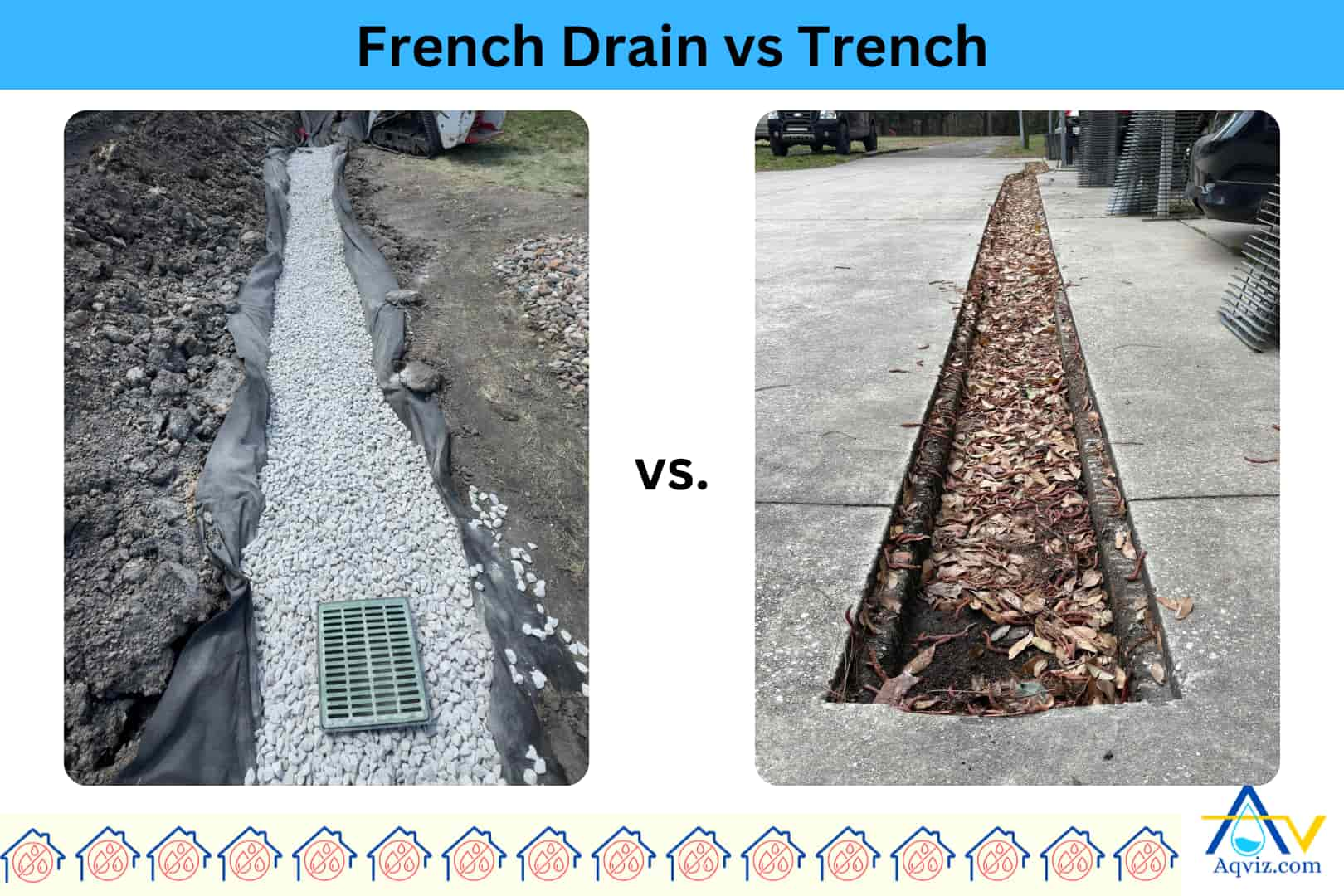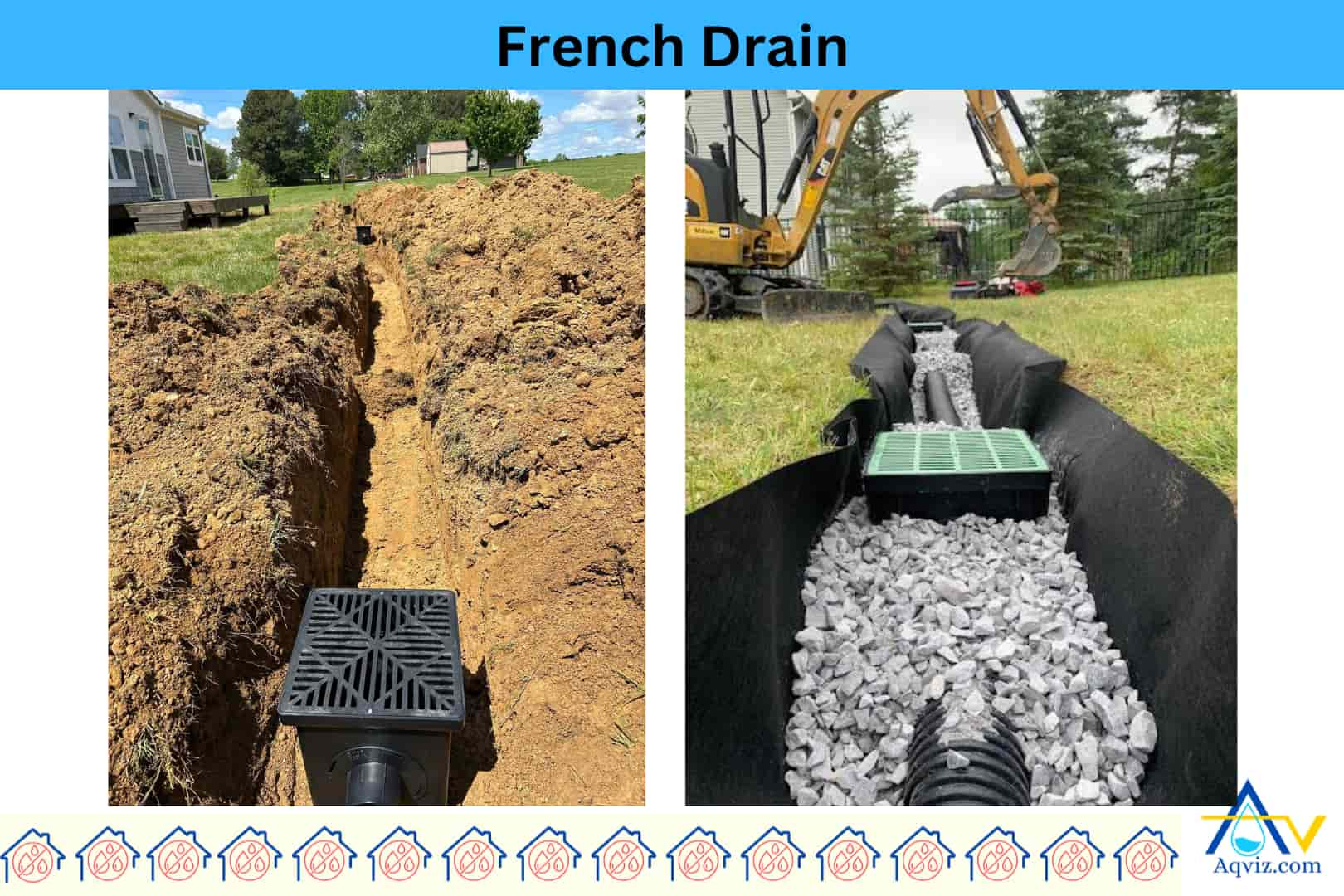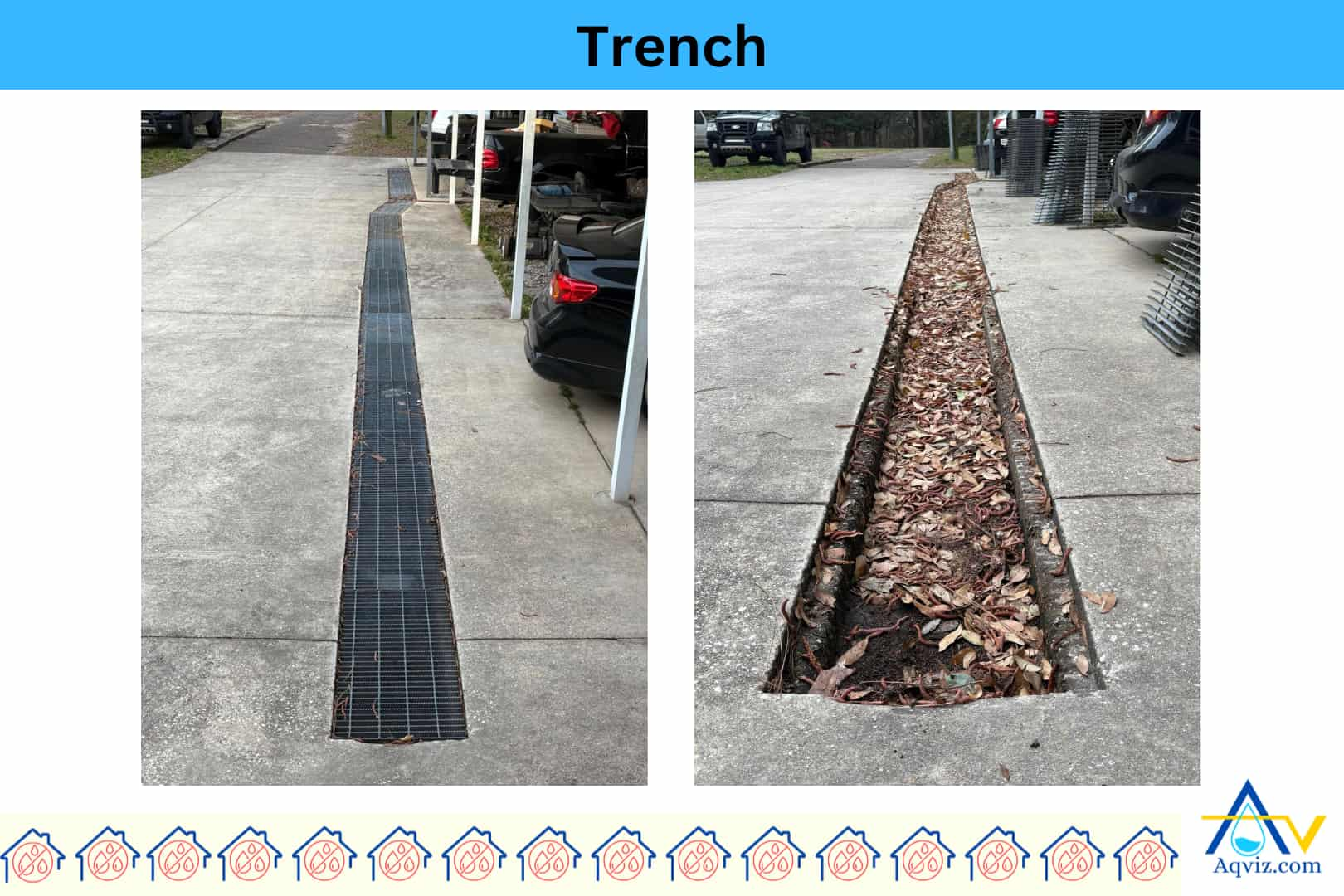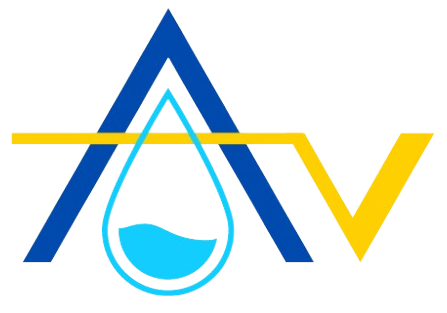French Drain vs Trench: What are the Differences?

French drain and trench are two types of domestic drain constructions that are used to redirect unwanted water away from the structure. A French drain is used to direct subsurface water in the ground, while a trench drain is used to direct surface water. Due to these two functionalities, there are extraordinary differences. So let’s see what are differences between French drain and Trench.
What Is a French Drain?
A French drain is a subsurface drain system designed to collect and redirect water from the basement, foundation, and crawlspace areas. The main components of the French drain are trench, rock, perforated pipe, geotextile fabric, catch basin, and sump pump. A French drain helps to prevent basement flooding, protect the foundation, reduce soil erosion, and reduce maintenance and repairs to the basement.

What is a Channel?
A channel drain, also known as a trench drain, is a linear surface drainage system designed to capture and redirect runoff water from hardscapes such as driveways, patios, garages, and pool decks. Unlike a French drain, it sits at ground level and handles surface water rather than subsurface groundwater.
What are the Differences Between a French Drain and a Trench?
The major differences between a French drain and a trench are
- Application difference
- Depth difference
- Drainage type differences
- Component differences
- Aesthetic differences
1. Application Differences Between French Drain and Channel
A French drain is used where water is absorbed into the ground and needs to be drained away from soil-saturated zones, while a channel drain is used where water remains above ground and needs to be intercepted before it spreads or pools on surfaces.
A French drain is primarily used to manage subsurface groundwater in areas like basement perimeters, foundation footings, retaining walls, crawl spaces, and soggy yards. It is designed to intercept and redirect water that saturates the soil, helping to reduce hydrostatic pressure and prevent water intrusion into underground or below-grade structures.
A channel drain, on the other hand, is used for controlling surface water runoff on hardscapes such as driveways, patios, walkways, pool decks, and garage entrances. It quickly captures and channels rainwater that flows over concrete or paved surfaces.

2. Depth Differences Between French Drain and Channel
A French drain requires more depth because it targets underground water and must be deep enough to relieve soil saturation, while a channel drain stays shallow because it only handles rainwater flowing above ground and does not need to penetrate the soil layer.
A French drain is typically installed at a depth of 18 to 24 inches (45 to 60 cm), and in some cases, up to 36 inches (91 cm), depending on the groundwater level and the drainage requirement near foundations or basement walls. This depth allows it to effectively capture and redirect subsurface water before it reaches structural elements.
A channel drain has a shallow depth. It is between 4 to 6 inches (10 to 15 cm) just beneath the finished surface of concrete or paving. It is designed to intercept and move surface runoff water only.

3. Drainage Type Differences Between French Drain and Channel
French drains are essential for controlling underground water pressure and preventing seepage, while channel drains focus on quickly removing surface-level water to prevent pooling and surface erosion.
A French drain is designed to handle subsurface water, which includes groundwater, saturated soil moisture, and water accumulating below the surface near foundations, basements, or retaining walls. It works by collecting water that infiltrates the soil and redirecting it away before it causes structural or moisture-related damage.
A channel drain, on the other hand, manages surface water such as rainwater runoff flowing over driveways, sidewalks, patios, pool decks, and other impermeable surfaces. It captures this water at ground level and channels it into the drainage system.
4. Components Differences Between French Drain and Channel
French drain and channel have the following components.
A French drain consists of the following 5 essential components.
- Perforated drain pipe (usually 4 or 6 inches in diameter)
- Gravel or crushed stone (3/4 inch or 19 mm, angular and washed)
- Geotextile filter fabric (non-woven, to prevent soil intrusion)
- Excavated trench with proper slope
- Sump basin or discharge outlet for water exit
A channel drain includes the following 5 essential components.
- Linear drain channel body (PVC, HDPE, or polymer concrete)
- Grated cover (plastic, steel, or decorative cast iron)
- End caps and outlet adapters
- Catch basin (optional, for collecting debris)
- Solid discharge pipe connected to a storm drain or dry well
5. Aesthetic Differences Between French Drain and Channel
French drains are ideal for a seamless landscape, while channel drains are chosen for areas where visible surface drainage is necessary to handle runoff quickly.
A French drain is mostly hidden from view, as it is installed underground and covered with soil, gravel, or lawn, making it nearly invisible once completed. It blends naturally into the landscape, maintaining a clean, unobstructed appearance in yards, gardens, or along foundation lines.
A channel drain, by contrast, remains fully visible on the surface. It features a long, narrow trench with a grated cover, which may be functional but can interrupt the look of driveways, patios, or walkways. While decorative grates are available, the system still adds a noticeable line across hardscaped areas.
What Are the Similarities Between a French Drain and a Channel?
French drains and channel drains share several key similarities that make them effective drainage solutions in both residential and commercial settings.
- The main purpose is water direction: Both systems are designed to collect and redirect unwanted water away from structures or surfaces. Whether it’s subsurface or surface runoff, the goal is the same to move water safely to a discharge point.
- Both drain based on gravity flow: Each system relies on a consistent slope to allow water to flow naturally downhill without requiring pumps. This makes both French and channel drains highly efficient when installed with proper grading.
- Both systems should have a clear discharge point: For optimal performance, both drains must connect to a defined outlet such as a storm drain, dry well, or sump basin. A blocked or improperly located discharge point can cause backups and system failure.
- Both prevent structural water damage: Both drainage types help prevent moisture-related issues like foundation cracks, basement flooding, mold growth, soil erosion, and surface heaving. French drains protect underground structures, while channel drains safeguard surface areas and hardscapes.
